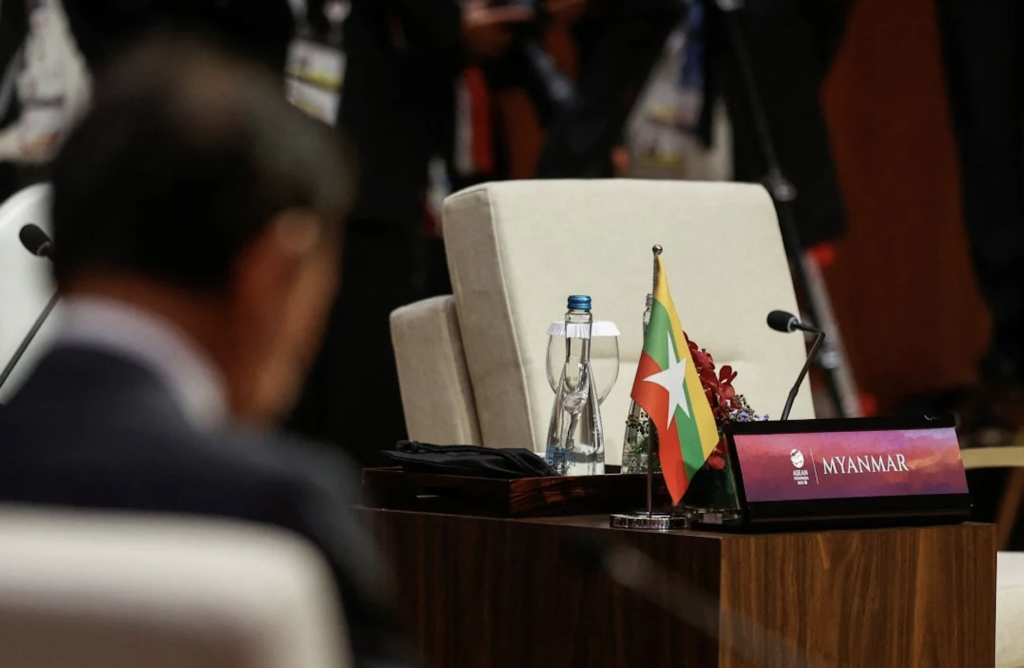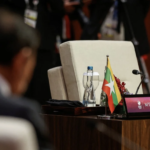
Last week’s Asean summit in Jakarta came at a time when the geopolitical environment in Southeast Asia and the Indo-Pacific continues to worsen with the growing polarisation of power. Aside from the challenges to its centrality vis-à-vis the external environment, the Association of Southeast Asian Nations faces impediments to its centrality from within, amid its members’ diverging interests.
In this context, there are two major sticking points: the ongoing South China Sea dispute and how to engage with Myanmar. Asean remains divided in its approach to addressing the South China Sea issue, particularly due to China’s territorial ambitions and militarisation of the disputed maritime territory. While the chairman’s statement of the summit highlighted the need to uphold the United Nations Convention on the Law of the Sea (UNCLOS) and improve the environment for negotiating a code of conduct on the South China Sea, there remains significant gaps in Asean’s ability to forge a common operational approach towards maritime security in the disputed territory.

While member countries like the Philippines are overtly supportive of the need to uphold the rules-based order and prevent hegemonic tendencies from spilling over into the South China Sea, other members might perceive threats differently, due to geography, domestic constraints and external pressure.
In fact, maritime security is highly controversial for Asean, as evidenced by previous failures to agree on the issue in 2012 and 2016. As Asean chair, Indonesia decided to shift the location of this year’s Asean joint maritime drills away from the South China Sea – possibly a reflection of some members’ wariness.
Given the current institutional constraints, the most practical short- to mid-term path for Asean members sharing concerns and maritime security interest lies in strengthening minilateral formats. Such arrangements have recently gained momentum, such as the Philippines-Indonesia-Malaysia trilateral patrols. A similar framework could include Asean members such as Vietnam.
Their overlapping claims in the South China Sea notwithstanding, history has shown that Asean members are able to resolve outstanding bilateral issues more effectively through consistent diplomatic efforts. Examples include the maritime border agreement between Indonesia and Vietnam in 2022 and ongoing maritime cooperation negotiations between the Philippines and Vietnam.
However, minilateralism must not be understood as a move to weaken Asean. Rather, it is an important stepping stone to better socialise other member states. For example, a similar process of gradual socialisation was also seen in Asean’s eventual acceptance of the Asean Outlook on the Indo-Pacific.
On the issue of Myanmar, Asean members agreed last week to create a “troika mechanism”, comprising the previous, current and incoming chairs of the bloc, to avoid missteps. In addition, a joint statement from the other nine members “strongly condemned the continued acts of violence in Myanmar”, while pointing the finger at the junta for impacting stability in the region.
Furthermore, Asean decided that Myanmar would not take the helm in 2026, but would have to wait out the rotation among the other members in alphabetical order.
However, these steps in isolating and pushing Myanmar towards compliance with the bloc’s five-point consensus peace plan might be too small to make a significant impact.
While the troika could prevent the kind of renegade and embarrassing “cowboy diplomacy” that Cambodia engaged in with Myanmar as incoming Asean chair in late 2021 and early 2022, there is no guarantee that the new mechanism – which will comprise Indonesia, Laos and Malaysia – will be effective. For as long as Thailand has been quietly engaging Myanmar’s State Administrative Council, so too has Laos.
Laos was present at the meeting with the junta that was hosted by Thailand in December last year, under then prime minster Prayut Chan-o-cha. Laos also engaged with Myanmar at the Mekong River Commission Summit it hosted in April this year. Given Vientiane’s history of ill-advised engagement, the inclusion of Laos in the troika is either a sign of compromise, or a wild card.
Meanwhile, the new government in Thailand does not hold the same promise as the progressive Move Forward Party which dealt a sharp blow to the military-backed establishment in May’s election. With unelected senators successfully preventing the leader of Move Forward, Pita Limjaroenrat, from becoming prime minister, a coalition was formed instead by May’s runner-up, Pheu Thai, with military-oriented parties. To make this new coalition successful, Thai Prime Minister Srettha Thavisin will need to be diplomatic in dealing with the Thai military, which likely means that Bangkok is not about to reverse its policy on Myanmar.
Even with the additional pressure from Asean, Myanmar is likely to hold its course, seeking bilateral cooperation with partners with vested interests in maintaining the status quo or boosting its security. China has poured more than US$21 billion into infrastructure and other projects in Myanmar, while Russia has supplied as much as US$260 million in arms since the coup.
Therefore, even though the small steps taken by Asean are a positive development for internal solidarity, progress on Myanmar will be incremental at best.






